Since I was on the ceremony crew the other day for the Pontifical Mass at St. Peter’s I couldn’t get any photos. But, before Mass I found some interesting sights to record and share.
This is inside the sacristy of the chapter of canons of St. Peter’s. Our vestments are laid out.
This is what I had for the Mass. Before you ask, yes, it was both heavy and warm.
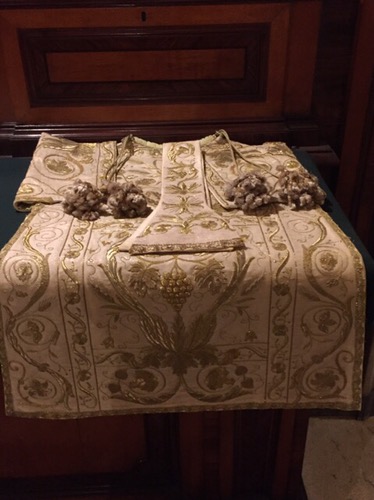
In the little chapel off the sacristy, it seems that some canon or other is saying the traditional Mass. As it should be.
This altar was consecrated by Henry Card. Stuart.
A real plus was a chance to spend time with the glorious wooden 13th c. Crucifix which I wrote about the other day. I had taken note that the it was displayed in the sacristy of the canons. I had hoped that they hadn’t yet removed it. They did, but into an adjoining room… and they left the door open!
The Cross was clearly carved by a master who had deep faith and who prayed.
Another wooden point of reflection. The door to my old cupboard in the hall off the main sacristy. I said Mass in the basilica every day for years. I had my own niche for my personal gear for Mass.
Highlights of a meal.
Artichokes have been around, some from Brittany (so so) and new ones from S. Italy (much better).
On Sunday, Archbishop Alexander King Sample of Portland sang the Mass at Ss. Trinità dei Pellegrini for Christ The King. Before Mass…
During the sermon, a young server had a hard time focusing.
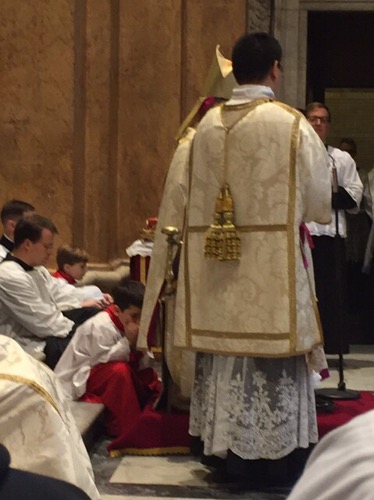
Later in the day, I said Mass for the intention of my benefactors. Thank you, all of you. I am very grateful. It is my pleasure and duty to keep you in my prayers.
The image of Mary over the altar.
Many relics are on the altar at St. Trinità in anticipation of All Saints.
The big busts are Augustine and Ambrose and Pius V and Gregory the Great. The smaller are Matthew, Luke, Peter and Paul. In the center is the co-patron of Rome and certainly patron of this church, St. Philip Neri.
And now for something completely different. Who knows what this is?
The spiffy poster for the All Souls Mass at the aforementioned church.
I popped in for a visit at the little church of St. Bridget on the Piazza Farnese.
Packing and sleep to follow. I barely managed to get the case closed, having introduced a large new reliquary for my fragment of the Cross back home.

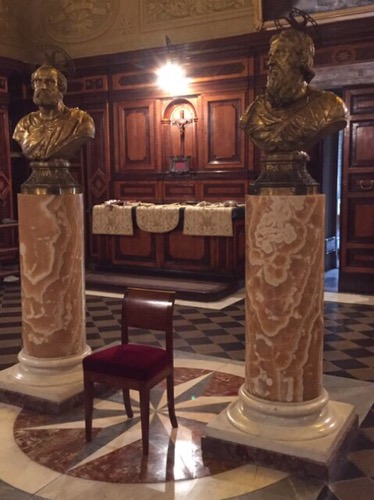
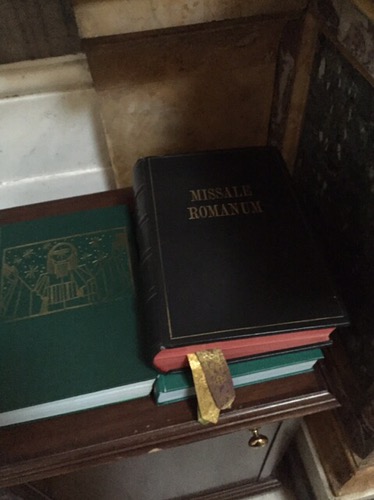
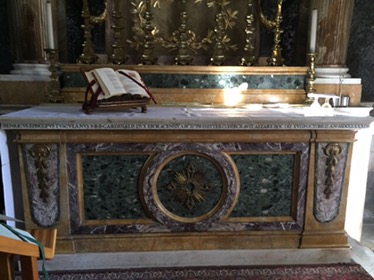
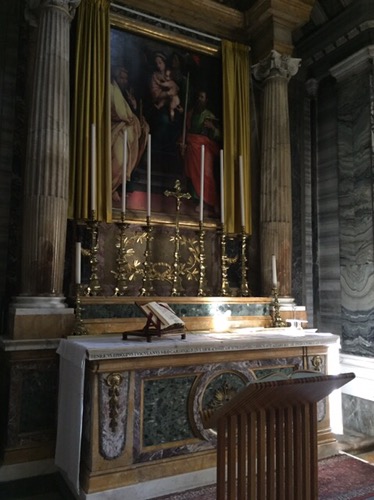

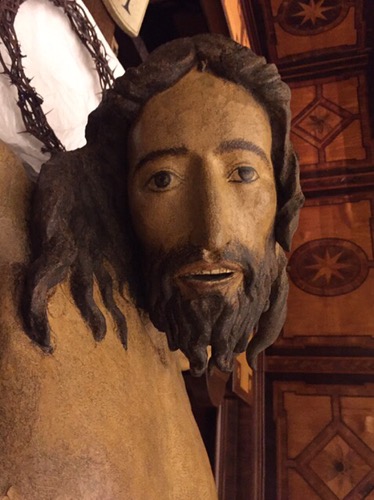
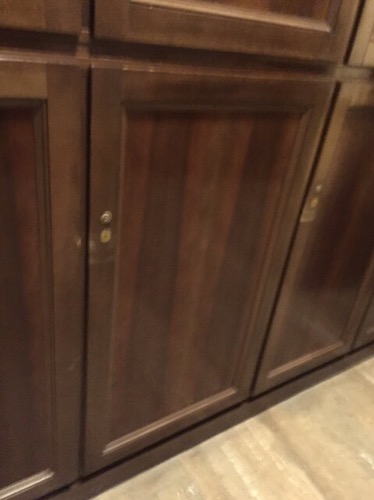
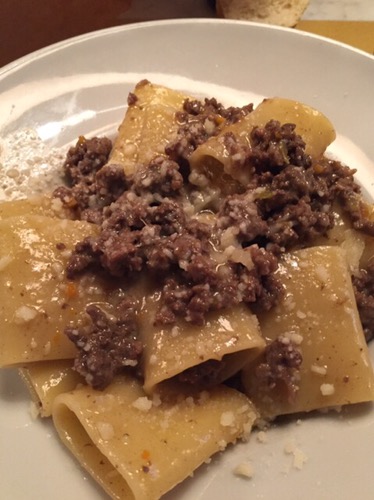

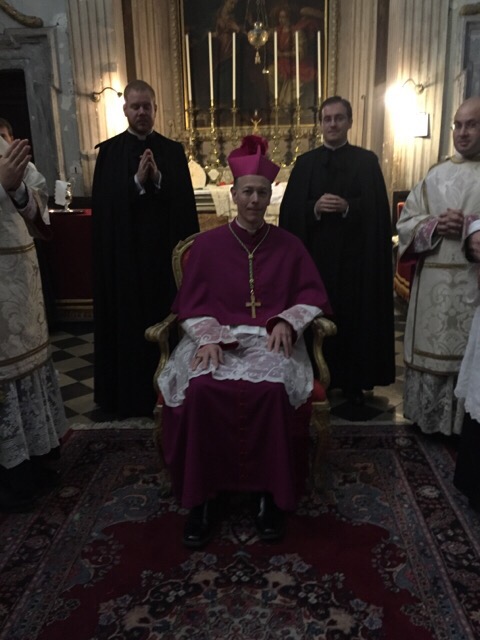
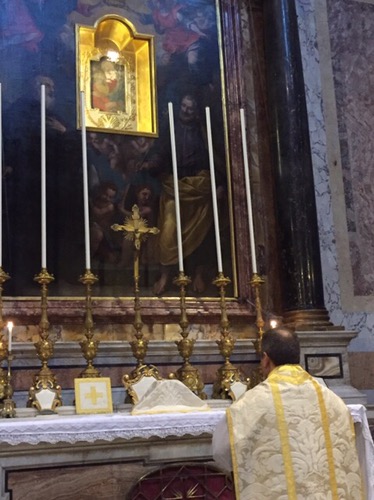
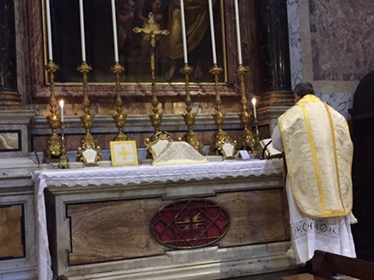
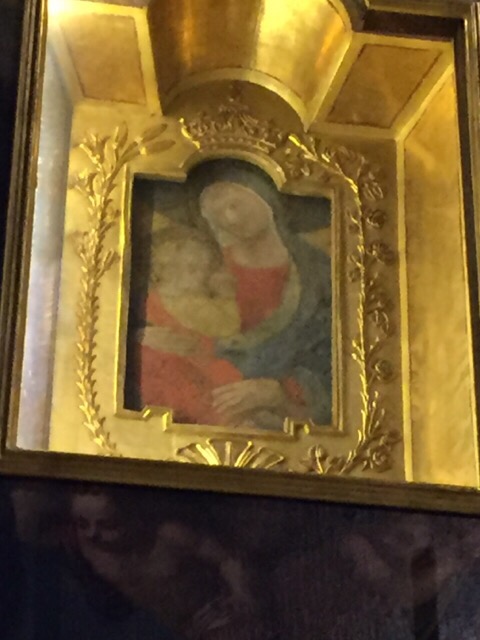
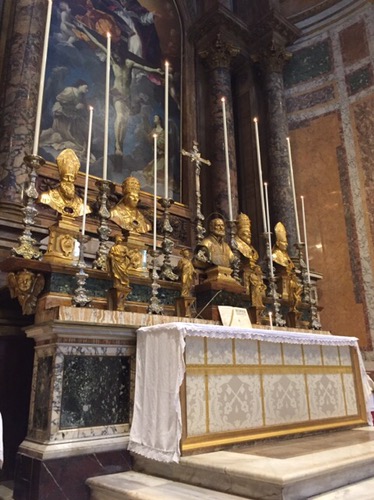
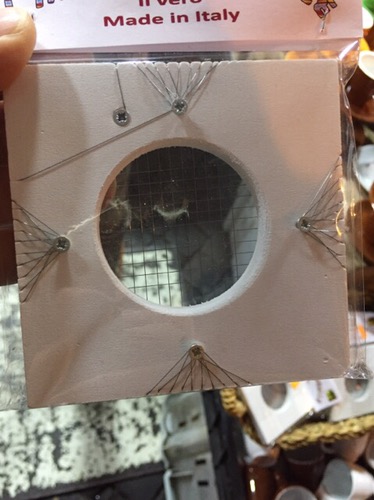
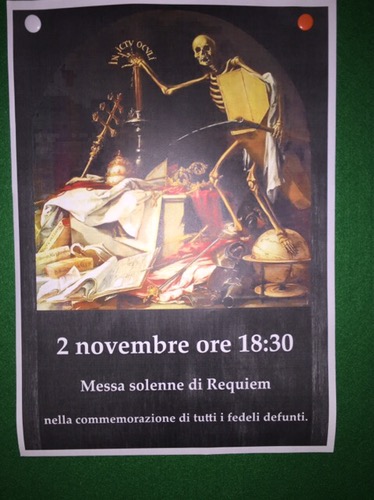
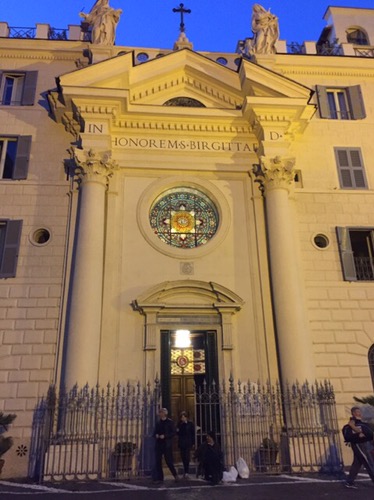
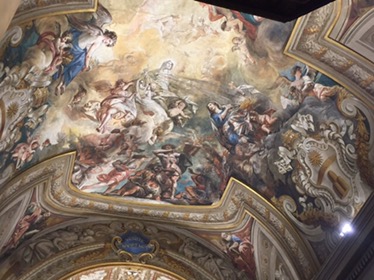
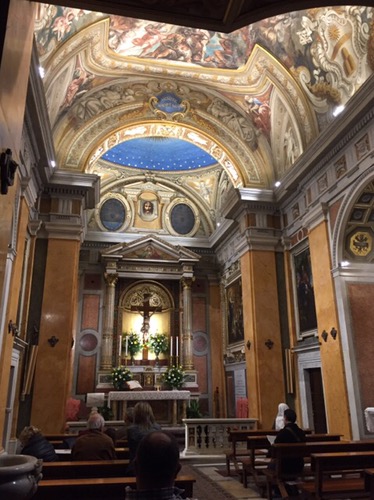

































I love this about Rome. What seems like a mediocre facade, it turns out inside is a splendid and marvelous temple of worship fit for a Divine King.
Dear Fr. Z.,
Salva reverentia, but check the dating of that Crucifix. It is certainly not from the 1200s. I would place the style as late 14th-cent. or perhaps even 15th. In any case, its style is not 13th-century.
“Who knows what this is?”
Something for keeping birds out of openings for ventilation?
Looks like a pall of some sort to me.
Is that how the name reads on a nearby inscription reads? That would be interesting; he was the Duke of York in pretence and I’ve only ever seen his name written as Henry Benedict Stuart, Cardinal York and not Cardinal Stuart. Interesting little factoid: one of the largest gems in the Imperial State Crown of Britain (the one used for opening Parliament) belonged to him and was set in his mitre pretiosa.
The Cross was clearly carved by a master who had deep faith and who prayed.
The face looks very much like the Holy Face of Manoppello
The CNS story on the restoration of the crucifix has:
The newly restored 14th-century wooden crucified Christ “has been resurrected” from obscurity — once caked over with dark paint and left forgotten behind an elevator shaft, said Cardinal Angelo Comastri, archpriest of St. Peter’s Basilica.
A host-cutter?
There are a lot of coffee cups in the background? And it appears there are more of those gadgets in the background~does it have something to do with coffee????
It’s a dreamcatcher!
Is it a puntarelle cutter? I used one that looked like that when I cooked in Rome.
Even if it’s not, look into puntarelle. It’s a chicory, and a pain to prepare, but delicious with the traditional anchovy and garlic dressing. Talk to your greengrocer or exotic local farmer a.s.a.p. I’m sure Fr. Z has come across it in Rome.
[Well done!]
If I am not mistaken, the Priest on the left side as we are observing in the picture of Bishop Sample is Father Noah Carter of the Charlotte Diocese. He is yet another of our wonderful young Priests from this Diocese.
Delighting in every sort of fresh chicory/endive of my limited experience, I had never heard of puntarelle, much less its characteristic cutter: thank you! (What is the Italian word for this sort of cutter? Hoping I’d find one in action on YouTube – did I ever (on the Canale di gregoriocorsi) – but the nomenclature still eludes me, so far.)
Thank you, too, for the photograph with annotation about the reliquary busts and full figures – if I ever saw such proper occasional (rather than permanent) placement, I had no idea just what I was seeing!
Puntarelle’s German Wikipedia article includes the delightful name ‘Vulkanspargel’ (though I’m not clear why it has the name ‘Volcano asparagus’: perhaps from resemblance to some heraldic Volcanoes?).